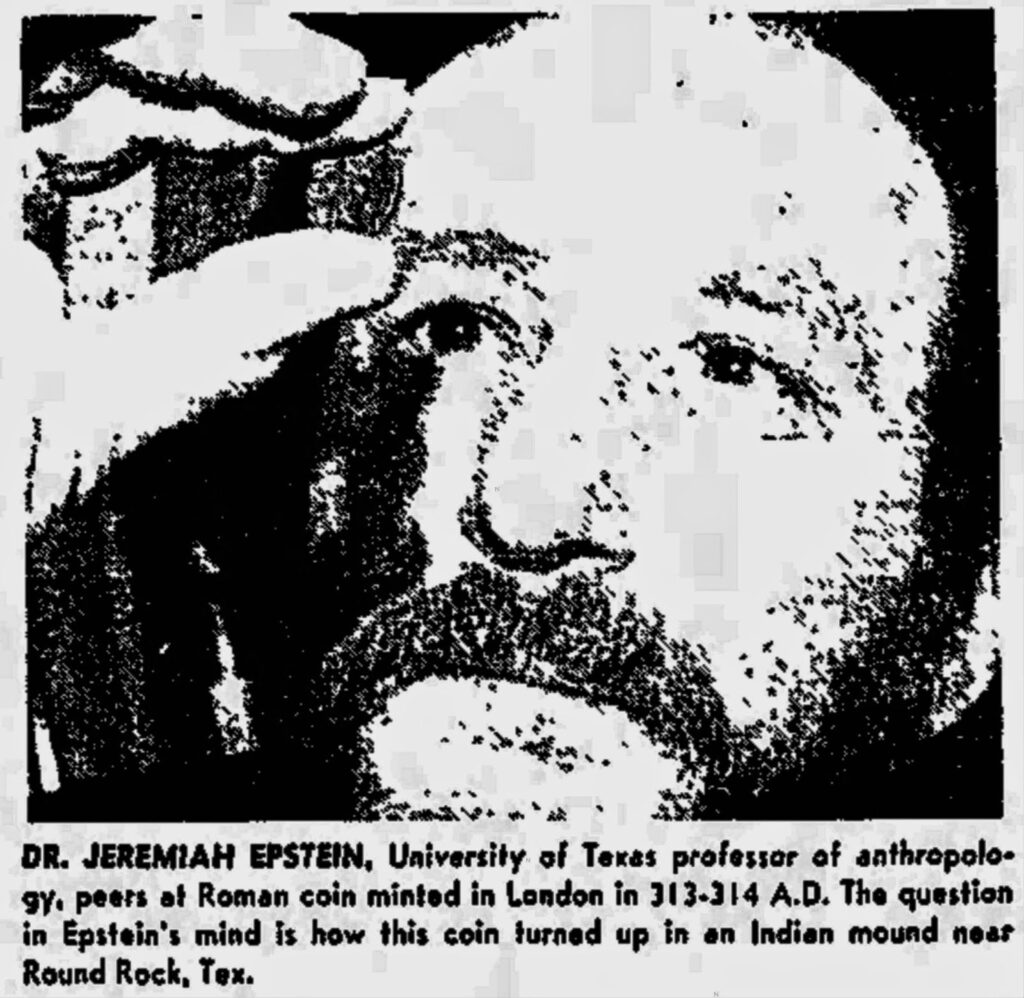Roman Coins discovered in (U.S) Texas burial Mound
Finds of Roman coins in the United States, including one in an Indian mound in Texas, are most likely lost souvenirs of World Wars I and II rather than proof of ancient transoceanic contact, an expert says.
A study of some 40 reported finds of Roman coins in the United States has convinced Dr. Jeremiah Epstein, an anthropologist at the University of Texas at Austin, that “if Romans ever got to America, we haven’t got any evidence of them yet.”
Dr. Epstein reported his findings to American and British experts at a symposium on ancient coins that ended here Tuesday. Roman coins were reported found in the New World as early as 1530, the research says, although it appears that that report and many others since have been in error.

The only documented pre‐Columbian European contact with the New World is the Viking settlement in Newfoundland, dating to about 1000 A.D.
Recently a London coin dealer and expert, Peter Seaby, identified a coin found at Blue Hill Lane as a Norse penny from the reign of Olaf Kyrre, 1067 to 1093 A.D. The coin was reportedly excavated from an Indian midden.
The finding of a Roman “follis” of Emperor Constantin the Great (306‐337 A.D.) in an Indian mound prompted Dr. Epstein to begin his study of reports of Roman coin discoveries. But other artefacts from the mound 1,000 years or older than the coins have been found.
It appears, Dr. Epstein says, that the coin is an example of “reverse stratigraphy,” a phenomenon known from other archaeological sites, of which later objects are carried down below earlier ones, often by animals’ burrowing activities.
As part of his investigations, Dr Epstein advertised in coin publications for people who had found or lost Roman coins.
One correspondent from Africa reported losing a coin while skiing in Colorado. A conference member reported that a coin dealer lost a number of coins, still unrecovered, in an accident on a Houston freeway.
Finds were reported from various areas, including what Dr Epstein describes as “obviously historical contexts,” such as a Baton Rouge, La., bus station and the Abilene, Tex., Air Force base officers’ club.
Others that were investigated turned out to be cases of mistaken identities, such as one “Roman” coin that was actually a token from the 1893 Colombian Exposition. An “ancient Jewish shekel” turned out to be a commemorative token given Jewish immigrants to the New World.
Research on reported finds shows the number increasing after 1914, apparently from returning G.I.’s losing coins picked up on foreign lands. Experts at the conference reported that that situation had occurred in many other places, including Australia, where Roman contact has not been hypothesized.
Accidental Contact Suggested
Dr Epstein agrees that, apart from deliberate attempts at colonization, conquest or trade, there is a possibility of accidental contact by Romans from a “drift voyage” by a disabled ship.
However, there is no evidence, he says, to indicate that any such voyage occurred. Coin finds are not concentrated in coastal areas, nor do they correspond to peak periods of Roman shipping, he explained.
There is evidence on the West Coast for “drift voyages” by Japanese junks, with documented reports, and coin concentration for 18th and 19th-century contact by Chinese fur traders with coastal tribes there, Dr Epstein says.





